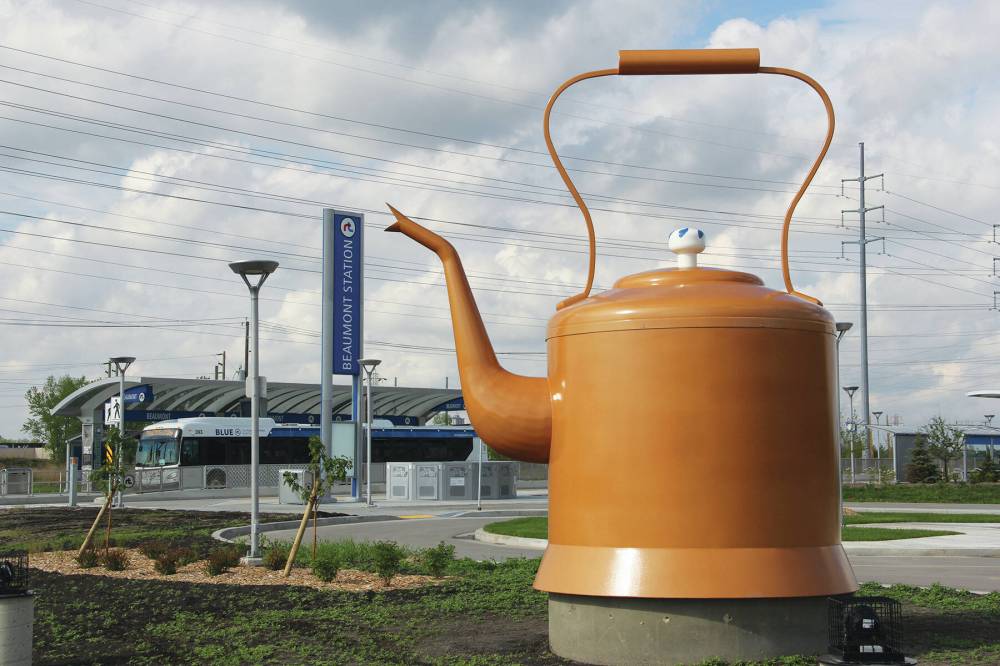Public art deserves public funding support
Advertisement
Read this article for free:
or
Already have an account? Log in here »
To continue reading, please subscribe:
Monthly Digital Subscription
$0 for the first 4 weeks*
- Enjoy unlimited reading on winnipegfreepress.com
- Read the E-Edition, our digital replica newspaper
- Access News Break, our award-winning app
- Play interactive puzzles
*No charge for 4 weeks then price increases to the regular rate of $19.95 plus GST every four weeks. Offer available to new and qualified returning subscribers only. Cancel any time.
Monthly Digital Subscription
$4.99/week*
- Enjoy unlimited reading on winnipegfreepress.com
- Read the E-Edition, our digital replica newspaper
- Access News Break, our award-winning app
- Play interactive puzzles
*Billed as $19.95 plus GST every four weeks. Cancel any time.
To continue reading, please subscribe:
Add Free Press access to your Brandon Sun subscription for only an additional
$1 for the first 4 weeks*
*Your next subscription payment will increase by $1.00 and you will be charged $16.99 plus GST for four weeks. After four weeks, your payment will increase to $23.99 plus GST every four weeks.
Read unlimited articles for free today:
or
Already have an account? Log in here »
Hey there, time traveller!
This article was published 19/10/2022 (1179 days ago), so information in it may no longer be current.
Public art’s value is demonstrated through its cultural and social impact on communities. Public art humanizes our public spaces by bringing meaning, vigour and agency to its constituencies. It offers a sense of place to sites that might be otherwise ignored or underused.
It celebrates a moment in history, contributes with new uses in the city such as seating or gathering, or accentuates significant places with meaning, as the Golden Boy does at the top of the Manitoba legislative building.
A bonus of public art is the nature of free access, opening the opportunity to communities’ cultural values and a sense of identity without the price tag of a ticket. Public art allows artists to combine different ideas and disciplines, advancing artistic practice and capturing the spirit of local histories and energies in common ground.

SUPPLIED IMAGE
Ian August’s Rooster Town Kettle is one of several works of public art stationed along the Southwest Transitway.
Public art is a magnet inviting locals and tourists to reinvent urban life, making generic urbanscapes unique and increasing a sense of place with a distinctive character. The opposite is also true: lack of public art makes cities and urban spaces generic and lacking in spirit.
The social value of public art promotes community regeneration and the renewal of urban spaces independent of the nature of the art: it could be a large sculpture or a community garden, a permanent project or an ephemeral experience. Public art matters because the rich experiences of people in public spaces matter.
Beyond the activation of an immediate economy attracted by public art, there are other economic benefits, including the creation of jobs and the overall stimulation of the economy. Public art can be essential when a municipality wishes to progress economically and be viable to its current and prospective citizens.
Data indicate that cities with an active and dynamic cultural scene are more attractive to individuals and businesses. Public art is a source of income for towns that invest and adopt policies to support it, representing an important cultural contribution to the community and a significant economic impact on cities.
Public art can also play a role in furthering truth and reconciliation in Winnipeg. The Winnipeg Arts Council, in collaboration with the city of Winnipeg, has developed significant commissions with Indigenous artists and communities.
One such example is the Rooster Town Kettle and Fetching Water by Ian August, set alongside Winnipeg’s new southwest rapid transit corridor. These projects assert Indigenous presence on the land and provide opportunities for learning about Indigenous experiences in the city.
The Winnipeg Arts Council public art program is the primary channel to promote public art strategically and comprehensively. It is one of the most well-prepared and high-level programs in Canada for its diversity, responding to the needs of different communities in the city through a wide range of artworks and a variety of public spaces.
The WAC received $500,000 per year in grant funding between 2004 and 2018. However, this was cut to $250,000 in 2019. In 2022, the WAC is allocated $125,000, and the budget is set to be phased out completely by 2024.
The WAC grant should be restored to 2018 levels and increased by 25 per cent to bring public art funding more in line with that in other major Canadian cities.
Above supporting the Winnipeg Arts Council, a sustained revenue source for public art programs is essential for sustaining a vibrant, culturally rich and economically smart creative city, attracting more investment and incentivizing tourism.
The new mayor and council should also create “One Percent for Art” public art programs in the city. How does it work? Whenever a municipality undertakes a capital building or improvement project, such as a school renovation or a new firehall, one per cent of that project’s budget is reserved for creating public art as part of the completed project.
It could range from an outdoor or indoor sculpture or a mural to an imaginative display of lighting, an interactive educational display, or even a fountain or creative use of water.
Percent for Art programs are already present in Edmonton, Calgary, Saskatoon, Ottawa, Mississauga and other Canadian cities, so it would be a natural step for this city to implement a Percent for Art program for major construction projects in Winnipeg.
Eduardo Aquino is a professor in the faculty of architecture at the University of Manitoba and the author of the Public Art chapter of “Winnipeg at a Crossroads: 2022 Alternative Municipal Budget,” published by the Canadian Centre for Policy Alternatives.
History
Updated on Wednesday, October 19, 2022 7:18 AM CDT: Adds photo


